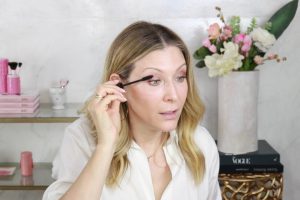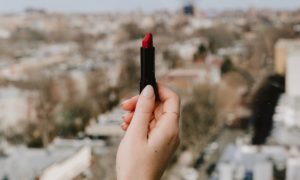The skin barrier is finally getting the recognition it deserves, with more and more ingredients — ceramides! Squalane! Hyaluronic acid! — available to keep it healthy and happy. That’s kind of a big deal, seeing as the skin barrier is especially vulnerable to damage; as the outermost layer of your body, it’s in charge of protecting the lower layers of skin and, of course, the rest of your body from external aggressors, be they pollutants or microbes.
But sometimes, not even the skin barrier can weather the daily assault, which ultimately compromises its integrity. (Translation: If your skin barrier is a fortress, that fortress can eventually get some big gaps and holes in it.) And while regular maintenance with barrier-focused active ingredients can help, the level of damage may call for a bigger intervention, especially if it’s led to flakes, peeling, and discomfort. If that sounds like you, scroll on for our guide on how to repair and reset a damaged skin barrier.
What happens when your skin barrier is damaged
“At its core, a damaged skin barrier results in water loss,” says NakedPoppy research scientist Marisa Plescia. When your skin barrier is on the fritz for whatever reason, the changes in its composition leads to a rise in transepidermal water loss, or TEWL.
And when that happens over time, it stresses out your skin barrier even further, creating a cycle that can lead to the incomplete shedding of dead skin cells, which looks like visible scaling, flaking, and loss of elasticity.
Sneaky signs that your skin barrier is compromised
You might already be aware of the first signs of barrier damage — personal experience counts. “The initial symptoms of skin dryness, flaking, itching, stinging, and sometimes even pain will not only persist, but the long-term inflammation associated with it can lead to other conditions, for example post-inflammatory hyperpigmentation and more prominent signs of premature aging,” says NakedPoppy skin specialist Tara Parenti.
However, there are other signs that tend to fly under the radar; a big one is more wounds, cuts, and even skin infections. “If the epidermis is exposed, the chances of germs and other substances entering the skin and body is much higher,” Plescia explains.
Another little-known sign of damage? Breakouts. “The bacteria that causes acne is more easily able to penetrate the skin [when the barrier is compromised],” says Plescia. That’s coupled with the fact that in treating it, you might not be helping. “It’s common to see people unfortunately worsening their condition by trying to treat it with aggressive ingredients, like salicylic acid and benzoyl peroxide, when their skin needs hydration and anti-inflammatories,” Parenti says.
What can cause skin barrier damage?
Really, what doesn’t damage the skin barrier? While your environment (we see you, winter) and over-cleansing are two major factors, there are many other contributors at hand. Certain medications can cause dry skin, Parenti says, as can some health conditions. “Then, you have the obvious triggers of skin barrier disruption: harsh chemicals and detergents, stress, allergens, and lifestyle factors,” she says.
How to heal a damaged skin barrier
We’ve got good news in store: It’s possible to repair a damaged skin barrier. And it’s definitely worth doing, stat, since “not taking steps to repair the skin barrier can lead to more pronounced skin conditions, discomfort and sensitivity, and even infection,” Plescia says. Here, exactly how to handle it.
Heads up: If this sounds overwhelming, we’ve got you covered! Our easy, 3-minute beauty assessment delivers personalized recommendations based on your skin type, preferences, and concerns — damaged skin barrier included.
Pull back your skincare routine
In this case, less is more. “First and foremost, I would recommend pulling back on skincare steps,” says Parenti. “I would discontinue morning cleansing and all exfoliating products.” Instead, swap in gentle, cream- or oil-based cleansers, such as our Nourish Cream Cleanser, and ensure you’re focusing on hydration instead. While exfoliating acids and retinoids have their place in a good skincare routine, this isn’t the time to continue them.
Do an ingredient audit
Make sure you’re giving your skin exactly what it needs — that is, moisture. “The easiest and most simple way to keep your skin moisturized is by using a daily moisturizer or similar skincare product with humectants and emollients,” says Plescia. (FYI, our screening process for moisturizers emphasizes ingredient quality, so you don’t have to do a deep-dive on your ingredient list when you shop at NakedPoppy!) “Humectants are substances that bind to water and retain hydration in the skin. Emollients, which are often oils, can then help make the skin softer and smoother.” They essentially act like mortar between the bricks of your skin cells. Plus, she says, emollients can also act as occlusive agents — meaning that they coat the skin and act as a seal, tamping down that TEWL. Rosehip seed oil is one such example, which is why it’s a mainstay of our Revitalize Organic Facial Oil.
Similarly, leave out what it doesn’t. Parenti suggests losing synthetic fragrance, synthetic color, detergents, and harsh soaps, which can further compromise the barrier. Sulfates are another no-no; commonly found in cleansers, they’re a major contributor to damage. “Studies have shown cleansers with stronger surfactants such as sodium lauryl sulfate, or SLS, can have a negative effect on skin barrier,” says Plescia. [1] “Although surfactants can leave your skin with that ‘squeaky clean feeling,’ they are actually potentially causing more skin damage and irritation to your skin barrier function.”
Scope out your lifestyle habits
Have you been traveling recently? Are you cranking up the temperature in the shower to offset chilly weather? Certain non-skincare-related factors could be to blame. With that in mind, “look at your overall health, diet, and lifestyle factors,” Parenti says. “Many skin conditions are a reflection of internal health.”
When to go back to your usual skincare routine
If you’ve been dealing with a damaged skin barrier — and its many discomforts — you might not exactly be enthusiastic about exfoliating. (Fair!) However, there’s a good chance you’ll be missing out on the radiance-boosting, skin-smoothing perks of many of these steps!
With that in mind, “you’ll know your skin barrier is back to health when you no longer experience the sensory symptoms of heat, tightness, burning, itching, and stinging — and no longer see the symptoms of flaking, dryness and redness,” says Parenti, who recommends adding in one new product each week. (Say, exfoliation once per week, then vitamin C the next week.)
It could take up anywhere from a couple of weeks to over a month for your skin barrier to return to normal, depending on the level of damage. “If the symptoms of a damaged skin barrier continue for weeks and cause discomfort even with daily moisturization, visit a dermatologist,” Plescia says.
Finally, take the past as a cue for your future. “Always try to recall what resulted in your damaged skin barrier,” says Parenti. Being more intentional and mindful about your skincare will not only prevent future damage — or at least make it less likely — but it’ll also turn your routine into a ritual.






Comments